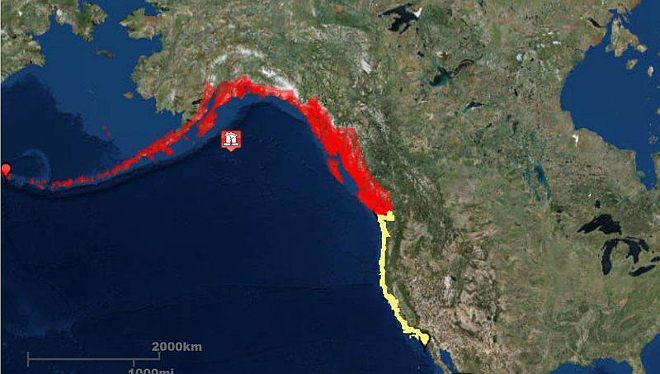 |
| A National Weather Service map showing the red tsunami warning zone as well as the yellow tsunami watch zone of January 23, 2018. The original watches and warnings ran south from Alaska, into Washington and California and also included Hawaii. Within four hours of the quake, all tsunami warnings were cancelled, according to the Pacific Tsunamic Warning Center. |
EarthSky.org
The U.S. Geological Survey reported a very large earthquake this morning in the Gulf of Alaska. It was originally reported at 8.2 magnitude, then downgraded further to 7.0; even at the lowest number, it’s still a powerful quake. The earthquake struck on January 23, 2018, at 2:31 a.m. Pacific Time 174 miles southeast of Kodiak, Alaska.
The Pacific Tsunami Warning Center (PTWC) issued tsunami watches or warnings for large portions of the Pacific, including a watch for the U.S. west coast from Washington to California as well as Hawaii, and a tsunami warning for the coast of Alaska and the Canadian province of British Columbia. Subsequently, all watches and warnings have subsequently been cancelled.
There were reports of some panic in Kodiak, sirens blaring, people being woken from sleep, near the quake’s epicenter. Waters were then said to be receding in Kodiak, and waves were said to have been “small.”
Tuesday’s quake came nearly seven years after Japan was rattled by a 9.0-magnitude earthquake, the strongest ever recorded there. The earthquake set off a powerful tsunami that breached the sea walls of coastal towns, killing at least 15,000 people and sparking a major crisis at the Fukushima Daiichi Nuclear Power Station.
There have been no reports of injury or significant damage.